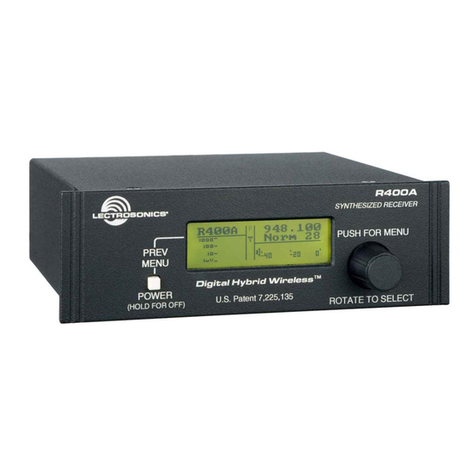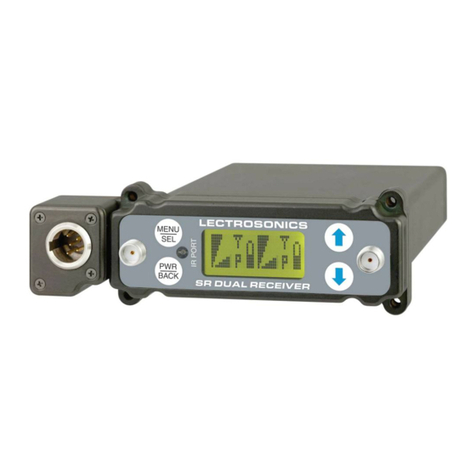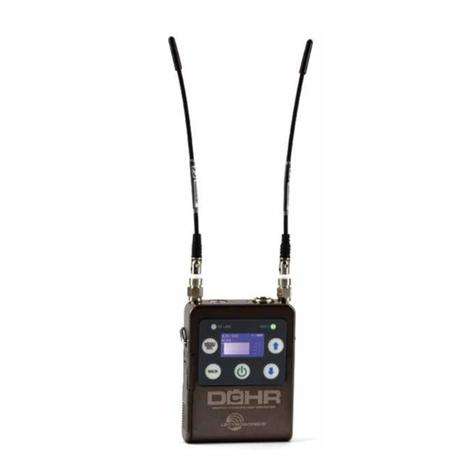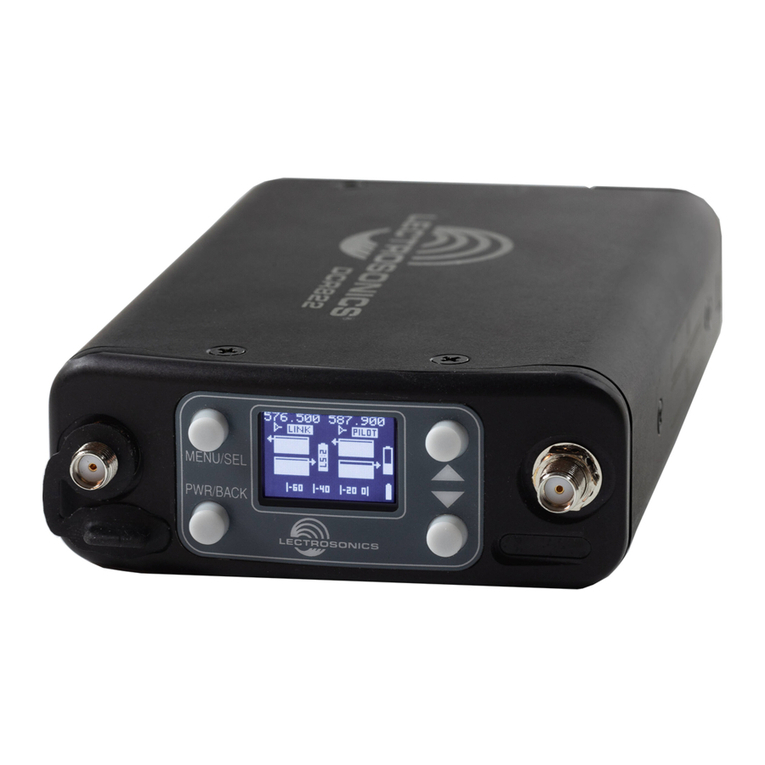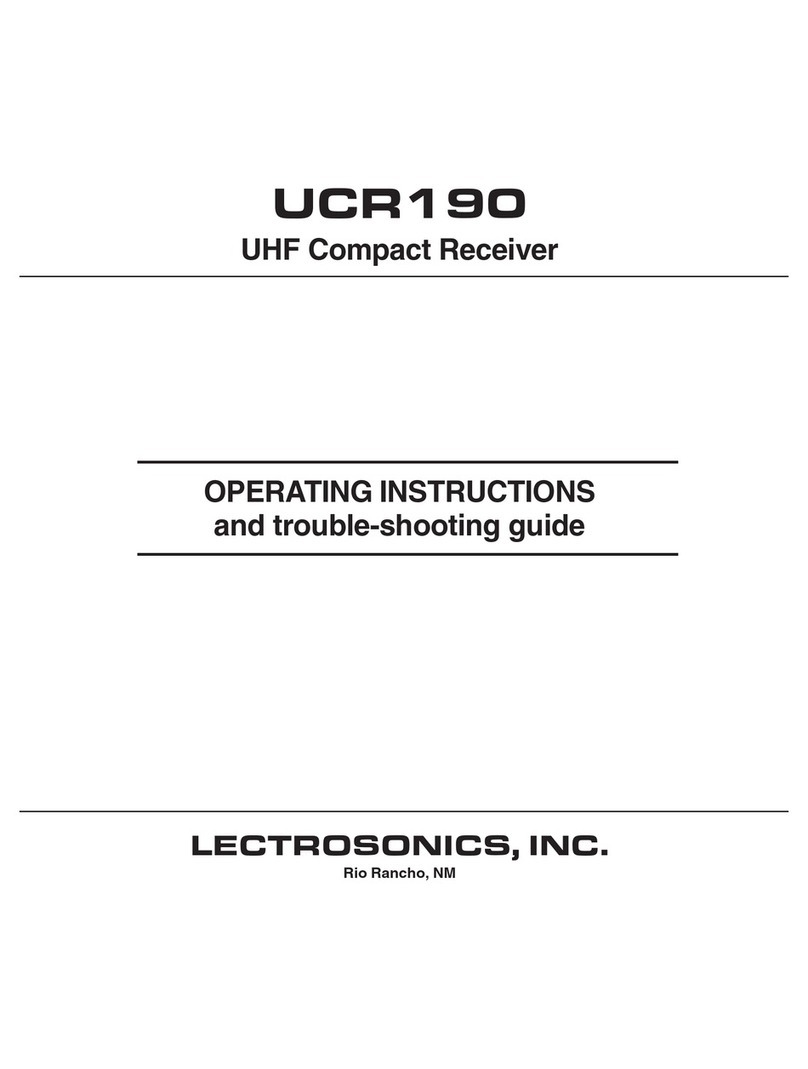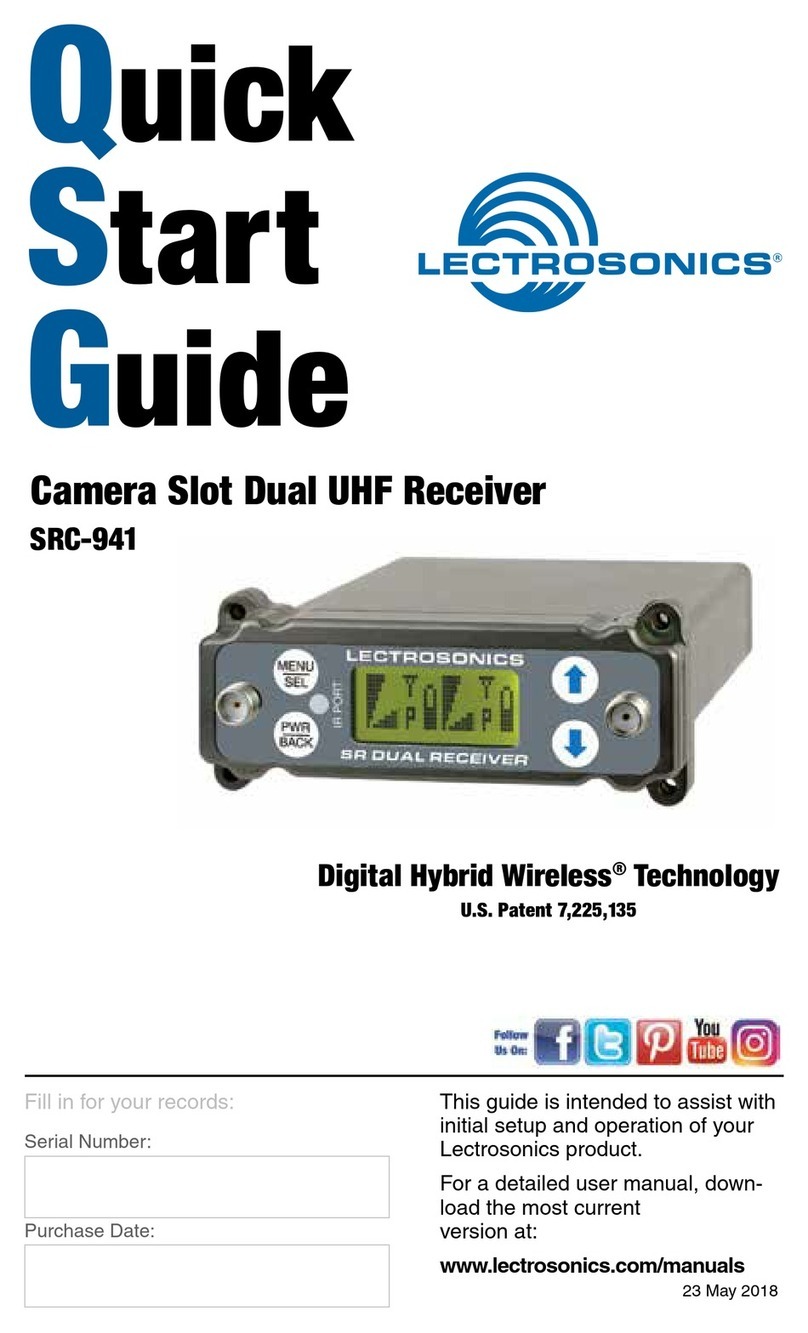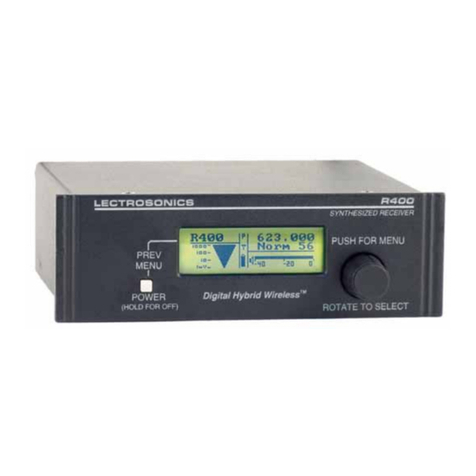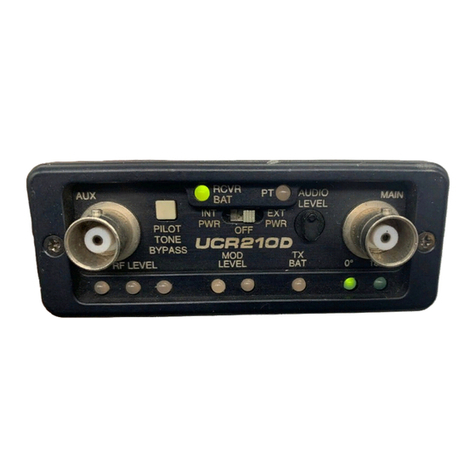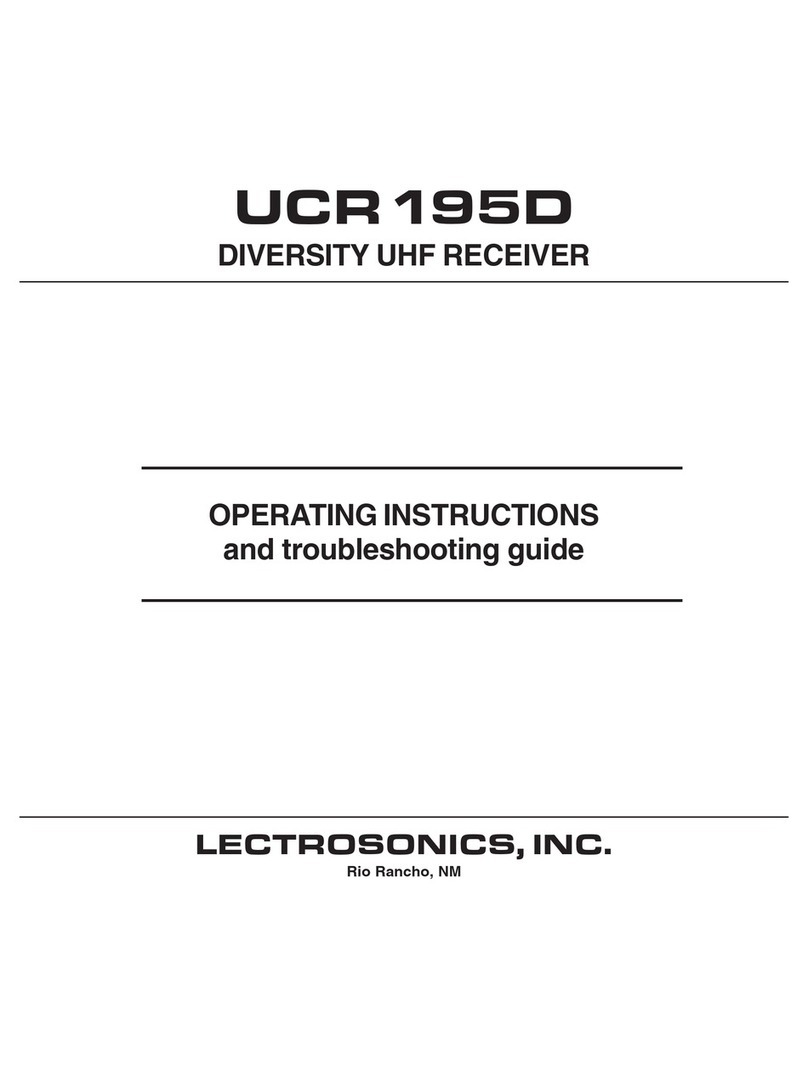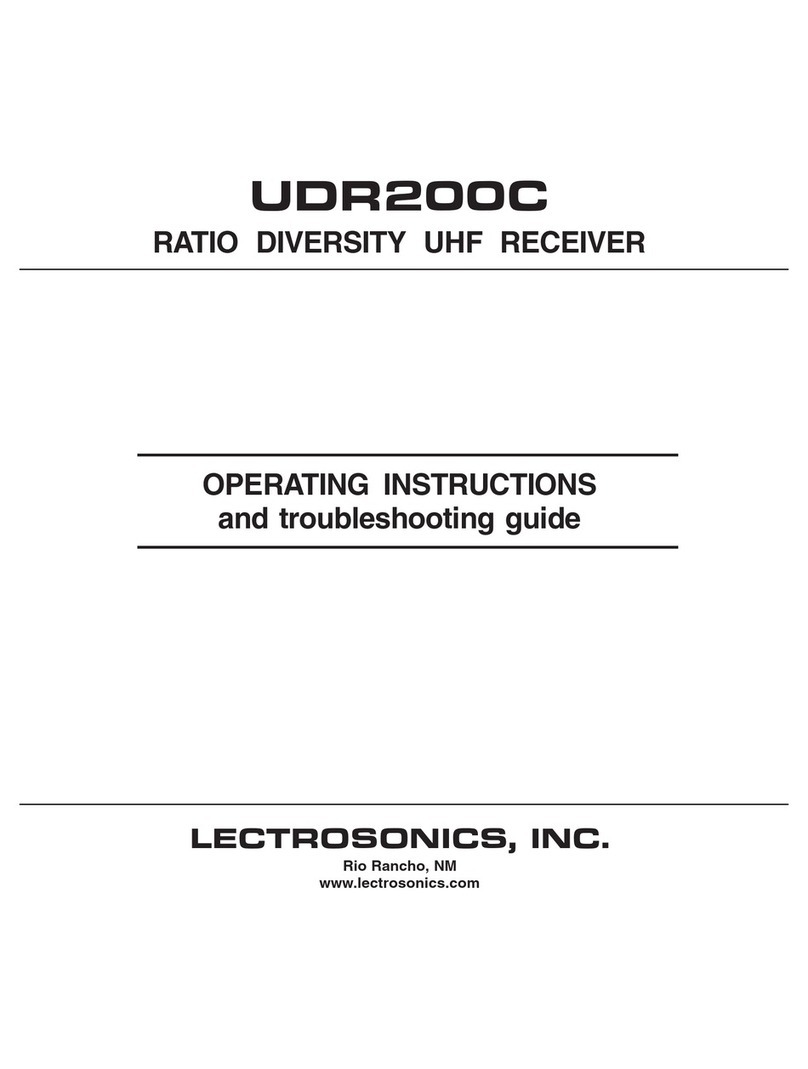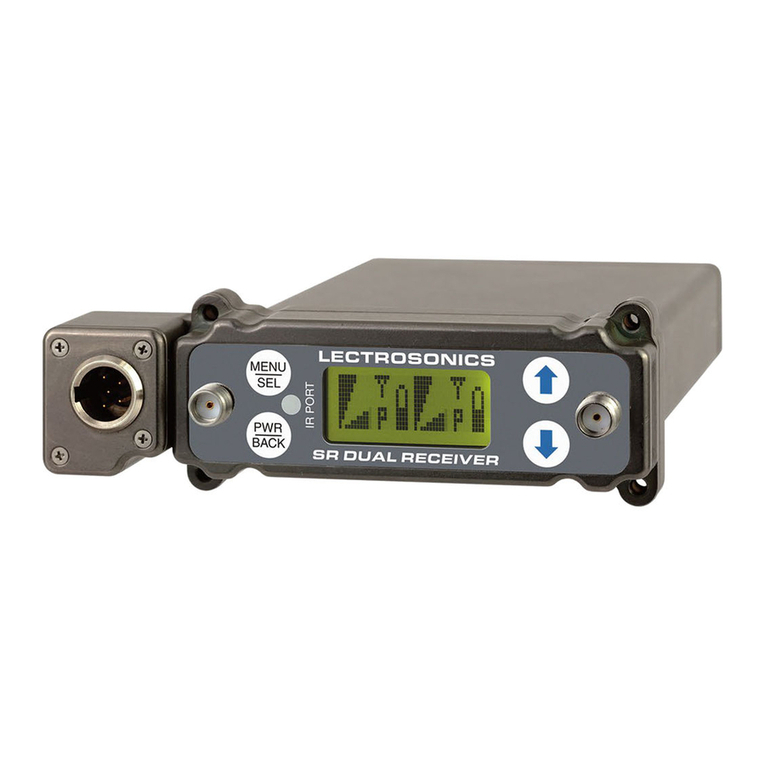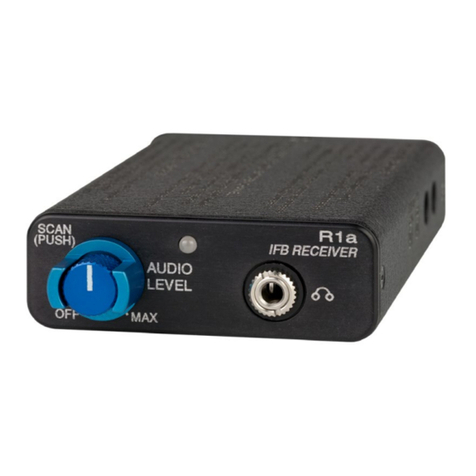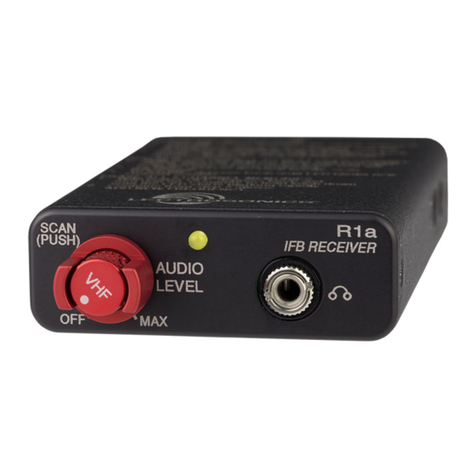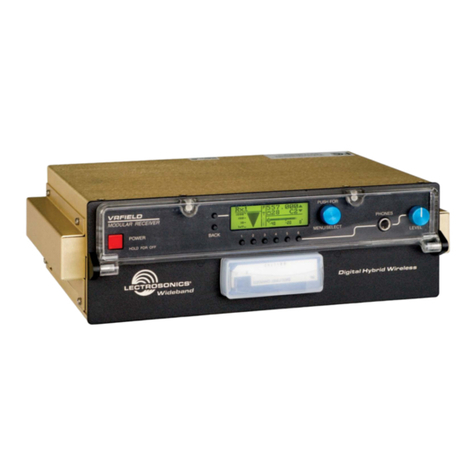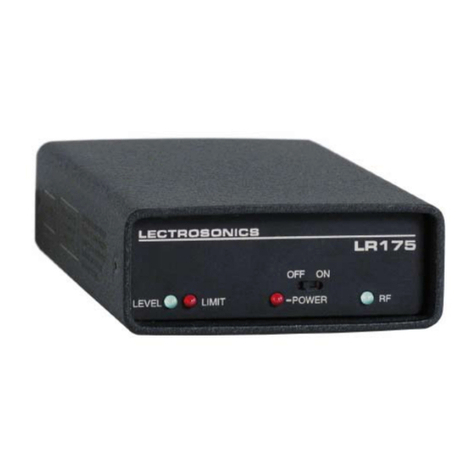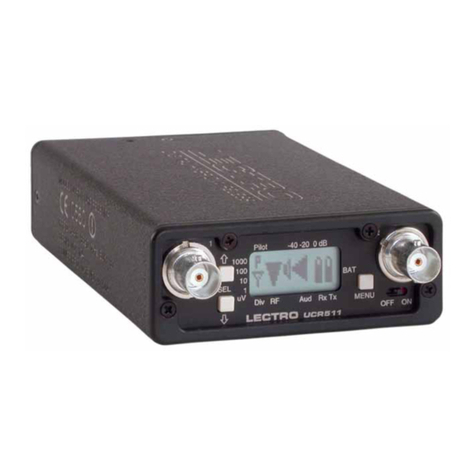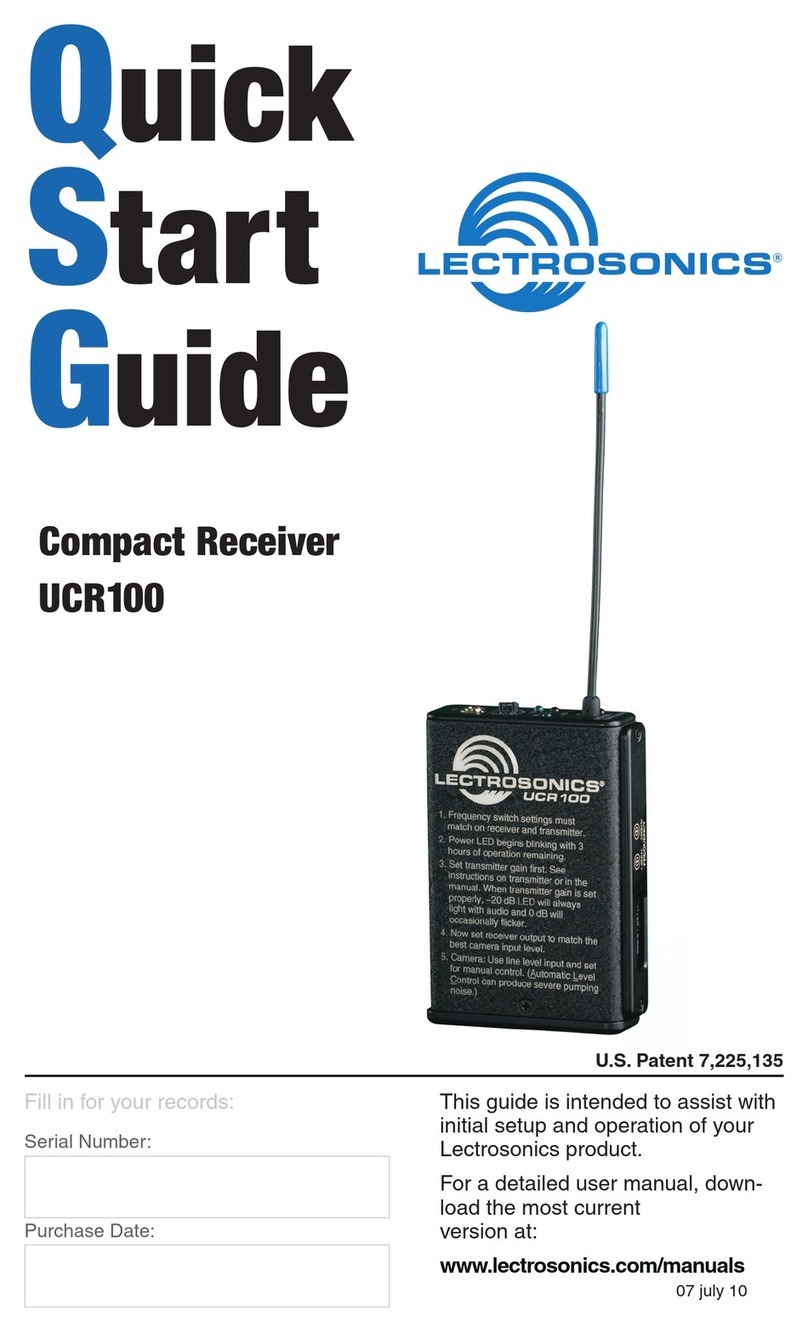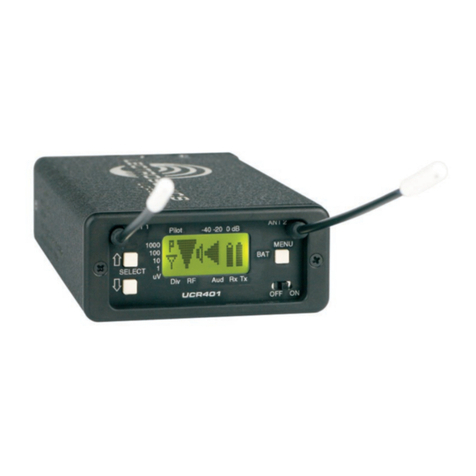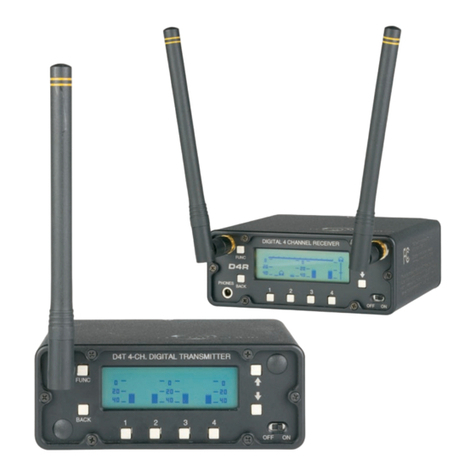
M2R-X
LECTROSONICS, INC.
4
M2R Digital IEM Receiver
The M2R Digital IEM Receiver is a compact, rugged
body-worn unit providing studio-grade sound quality
for performers or any professionals needing to monitor
detailed audio wirelessly. The M2R employs advanced
antenna diversity switching during digital packet
headers for seamless audio. The receiver covers UHF
frequencies from 470.100 to 607.950 MHz and uses
digital modulation.
The headphone jack is fed from a high-quality stereo
amplifier with 250 mW available to drive even ineffi-
cient headphones or earphones to sufficient levels for
stage performance or other noisy environments. The
receiver can select from stereo, mono from left or right
channels only, or mono from both channels, giving
the unit flexibility in terms of application as an IEM or
IFB receiver. An intuitive interface and high resolution,
color LCD on the unit provide performing artists and
audio professionals alike with a comfortable and confi-
dent user experience.
The M2R also employs 2-way IR sync, so can data
from the receiver can be sent to a transmitter and
thus onto Wireless Designer™ Software, via USB or
Ethernet. This way, frequency planning and coordina-
tion can be done quickly and confidently with on-site
RF information.
Encryption
The special firmware version M2R-X provides AES
256 bit encryption. When transmitting audio, there are
situations where privacy is essential, such as during
professional sporting events, in court rooms or private
meetings. Truly entropic encryption keys are first cre-
ated by the M2T-X Transmitter. The key is then synced
with the M2R-X via the IR port. The audio will be en-
crypted and can only be decoded and heard if both the
transmitter and the receiver have a the matching key.
NOTE: Unencrypted firmware versions of the
Duet system will not interact with encrypted
sysem components. Components in a system
must either have all 2.x (unencrypted) firmware
installed, or have all 3.x (encrypted) firmware
installed in order to interoperate.
Smart Tuning (SmartTune™)
A major problem facing wireless users is finding clear
operating frequencies, especially in RF saturated en-
vironments. SmartTune™ overcomes this problem by
automatically scanning all the frequencies available in
the receiver’s frequency block and tuning the receiver
to the frequency with the lowest RF interference, signif-
icantly reducing setup time.
RF Front-End with Tracking Filter
A wide tuning range is helpful in finding clear frequen-
cies for operation, however, it also allows a greater
range of interfering frequencies to enter the receiver.
The UHF frequency band, where almost all wireless
microphone systems operate, is heavily populated by
high power TV transmissions. The TV signals are im-
mensely more powerful than a wireless microphone or
IEM transmitter signal and will enter the receiver even
when they are on significantly different frequencies
than the wireless system. This powerful energy ap-
pears as noise to the receiver, and has the same effect
as the noise that occurs with extreme operating range
of the wireless system (noise bursts and dropouts). To
alleviate this interference, front-end filters are needed
in the receiver to suppress RF energy below and
above the operating frequency.
The M2R receiver employs a selective frequency,
tracking filter in the front-end section (the first circuit
stage following the antenna). As the operating fre-
quency is changed, the filters re-tune into six different
“zones” depending on the selected carrier frequency.
BLOCK BLOCK BLOCK BLOCK BLOCK BLOCK
470 MHz 614 MHz
In the front-end circuitry, a tuned filter is followed by
an amplifier and then another filter to provide the se-
lectivity needed to suppress interference, yet provide a
wide tuning range and retain the sensitivity needed for
extended operating range.
